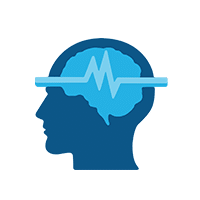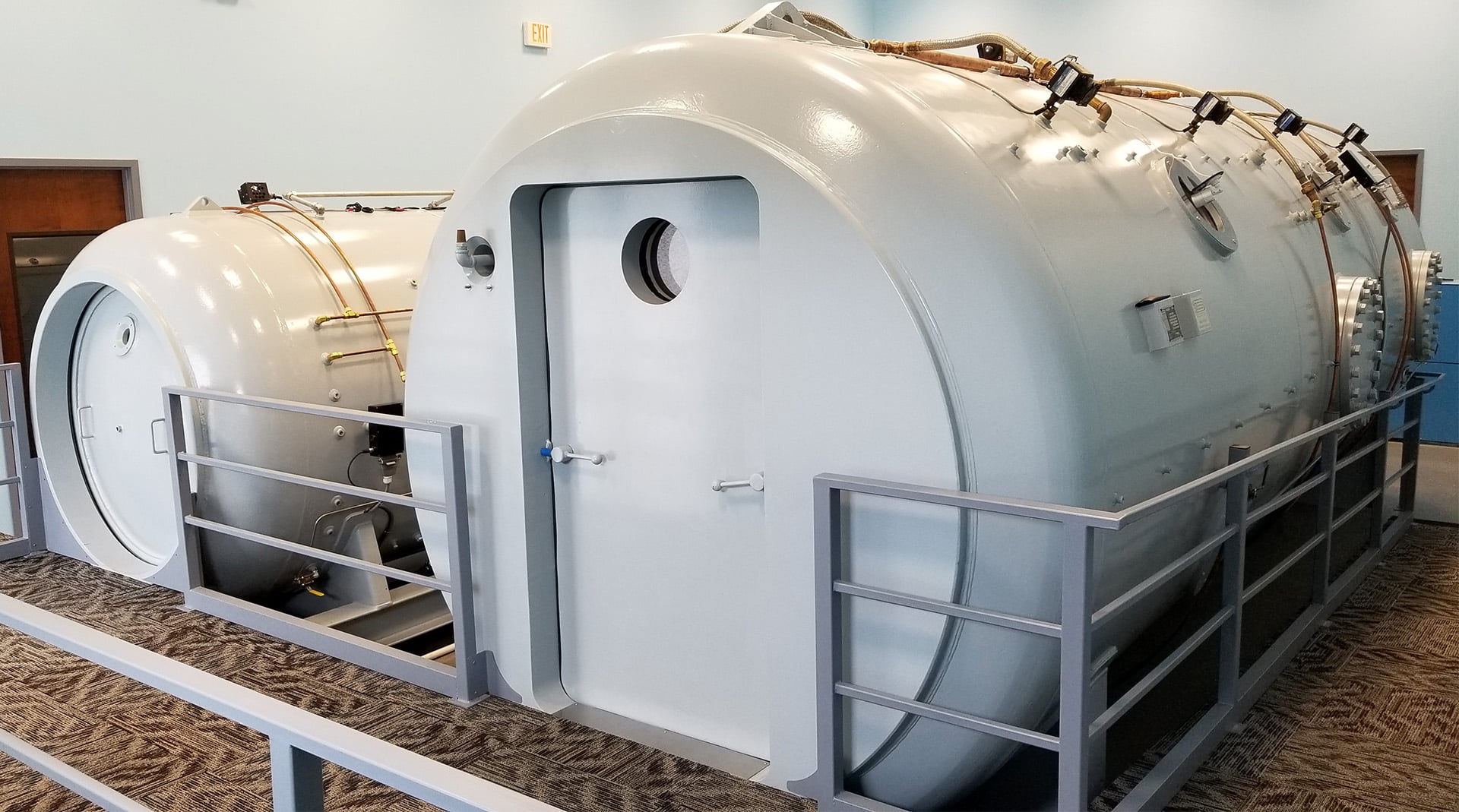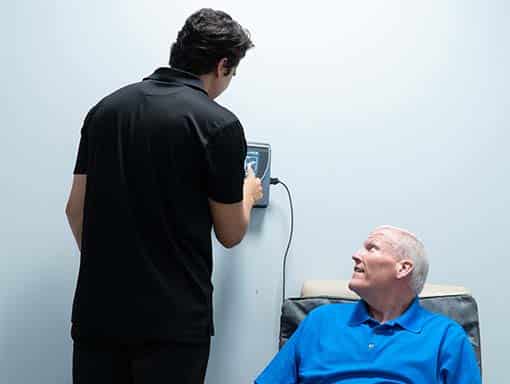Toxic Mold Syndrome
Toxic Mold Syndrome—also known as Chronic Inflammatory Response Syndrome (CIRS) from mold—is a condition caused by long-term exposure to harmful mold spores and the toxic substances (called mycotoxins) they produce. These toxins are often found in buildings with water damage and can stay in the body even after the exposure ends. This can lead to a wide range of symptoms that affect the brain, immune system, and various organs.
Some people are more sensitive to mold because of their genetics or because their bodies have a harder time removing toxins. When this happens, the mold toxins can build up in the body, causing chronic inflammation, problems with the immune system, and serious neurological symptoms that interfere with everyday life.
Common symptoms include fatigue, brain fog, anxiety, shortness of breath, sinus congestion, headaches, muscle aches, and trouble sleeping. During detox, many people notice their symptoms temporarily get worse. This is known as a Herxheimer reaction and happens when the body starts clearing out the stored toxins. While it can be uncomfortable, this reaction is usually a sign that the healing process has begun.
Understanding Toxic Mold Syndrome
Toxic Mold Syndrome isn’t just about being exposed to mold—it’s a condition that affects your whole body. When mold toxins build up, they can overload your detox system, weaken your immune response, and inflame your brain and nerves. This leads to a wide range of symptoms that don’t go away easily. These symptoms are often caused by:
-
Chronic Neuroinflammation: Mycotoxins inflame the central nervous system, contributing to brain fog, memory problems, anxiety, depression, and autonomic nervous system dysregulation.
-
Mitochondrial Dysfunction: Toxins damage the mitochondria (the cell’s energy producers), resulting in chronic fatigue, poor cellular repair, and low stress resilience.
-
Immune System Dysregulation: Mold exposure can either overstimulate or suppress the immune system, leading to increased vulnerability to infections, inflammation, and autoimmunity-like responses.
-
Oxidative Stress & Detoxification Burden: Mold toxins strain detox organs like the liver and lymphatic system, increasing inflammation and reducing the body’s ability to eliminate harmful compounds effectively.
-
Blood-Brain Barrier Permeability: Mold toxins can weaken this protective barrier, allowing chemicals and immune cells to enter the brain, worsening neurological symptoms.
-
Nutritional Deficiencies & Gut Dysfunction: Chronic inflammation and toxic stress impair nutrient absorption and gut health, further disrupting hormone balance, mood, and immune response.
Effectively treating mold toxicity requires more than avoiding exposure—it involves restoring immune balance, reducing inflammation, enhancing detoxification, and repairing the cellular and neurological damage caused by long-term toxin overload.
Extivita Therapies for Toxic Mold Syndrome

Hyperbaric Oxygen Therapy

Neurofeedback

Nutritional IV Therapy

Pulsed Electromagnetic Field Therapy (PEMF)

Infrared Sauna
Hyperbaric Oxygen Therapy (HBOT) for Toxic Mold Syndrome
Hyperbaric Oxygen Therapy (HBOT) involves breathing 100% medical-grade oxygen inside a pressurized chamber, typically at 2.0 atmospheres absolute (ATA). This process significantly increases the amount of oxygen dissolved in the blood plasma, allowing for deeper oxygen delivery into tissues—even those with poor circulation or inflammation.
For individuals suffering from mold toxicity, HBOT helps restore oxygen to oxygen-starved tissues, reduce systemic inflammation, promote detoxification, and support brain and immune system recovery. These effects make HBOT a powerful tool for those experiencing chronic symptoms caused by long-term mold exposure.
Toxic Mold Syndrome Recovery Benefits

Enhances Detoxification
Mold toxicity burdens the body’s detox systems—especially the liver, lymphatic system, and gut. HBOT boosts oxygen availability to these organs, improving their ability to eliminate toxins efficiently. This helps reduce the buildup of harmful substances that contribute to fatigue, joint pain, and neurological symptoms.
Helps the Body Fight Mold and Bacteria
Mold exposure can leave behind harmful toxins and even trigger other hidden infections in the body. HBOT increases oxygen levels in tissues, creating an environment where mold, bacteria, and other harmful microbes have a harder time surviving. This extra oxygen gives your immune system a boost and helps the body fight off lingering infections more effectively.
Reduces Neuroinflammation and Brain Fog
Mold toxins inflame the brain and central nervous system, leading to cognitive issues such as brain fog, poor concentration, memory loss, and mood instability. HBOT calms this inflammation by delivering oxygen directly to the brain, improving clarity, focus, and mental resilience.
Supports Immune Regulation and Mitochondrial Repair
Mold exposure often causes immune system imbalance and mitochondrial dysfunction, resulting in poor energy and increased sensitivity to environmental triggers. HBOT helps regulate immune responses and supports mitochondrial energy production—restoring strength, stamina, and overall vitality.
Improves Circulation and Cellular Healing
Mold-related inflammation can impair circulation, slowing tissue repair and detox. HBOT stimulates angiogenesis (the formation of new blood vessels) and enhances blood flow to damaged areas, accelerating healing and the delivery of nutrients and oxygen throughout the body.
Neurofeedback for Toxic Mold Syndrome
Neurofeedback is a non-invasive, drug-free brain training therapy that helps regulate abnormal brainwave activity using real-time visual or auditory feedback. For individuals with Lyme disease—especially those experiencing neurological symptoms like brain fog, anxiety, or sleep disturbances—neurofeedback retrains the brain to shift away from dysfunctional patterns caused by chronic inflammation and infection. By encouraging healthier neural activity and promoting neuroplasticity, this therapy supports clearer thinking, emotional balance, and improved overall brain function.
How Neurofeedback Therapy Supports Recovery from Toxic Mold Syndrome
Promotes Neuroplasticity and Rebalances Brain Function
Mold toxins can cause neuroinflammation and disrupt communication between different areas of the brain. This often leads to symptoms like brain fog, memory issues, and trouble concentrating. Neurofeedback helps the brain rewire these pathways, restoring healthier patterns of activity and supporting improved cognitive function, focus, and processing speed.
Calms the Nervous System and Reduces Sensitivity
People with mold toxicity often experience a hypersensitive nervous system, making them feel overwhelmed, anxious, or reactive. Neurofeedback works to calm overactive brain regions, especially those tied to the fight-or-flight response. This leads to better emotional balance, greater resilience to stress, and reduced sensitivity to environmental triggers.
Reduces Sensory Overload and Light/Sound Sensitivities
People affected by mold often become highly sensitive to light, sound, smells, and touch due to inflammation in brain regions like the thalamus and limbic system. Neurofeedback can desensitize overactive brain areas, helping reduce sensory hypersensitivity and improve tolerance to the environment.
Enhances Brain Detox Pathways
Though indirect, neurofeedback may support detoxification by promoting deeper sleep, reducing cortisol, and regulating the glymphatic system, which clears waste from the brain during sleep. Better-regulated brainwaves can enhance the body’s ability to clear neurotoxins.
IV Therapy for Toxic Mold Syndrome
Nutritional IV Therapy delivers a targeted blend of vitamins, minerals, antioxidants, and amino acids directly into the bloodstream—bypassing the digestive system, which is often compromised in individuals with mold toxicity. This allows for maximum absorption and immediate support for detox pathways, immune function, and neurological health.

How IV Therapy Helps Recovery from Toxic Mold Syndrome
Replenishes Nutrient Deficiencies
Mold exposure and chronic inflammation can deplete essential nutrients like magnesium, B vitamins, and vitamin C. These deficiencies contribute to fatigue, brain fog, and weakened immunity. IV therapy quickly restores these critical nutrients to help support energy, cognitive clarity, and immune resilience.

Promotes Detoxification
Mold toxins burden the liver and other detox organs, slowing the body’s ability to eliminate harmful substances. Antioxidants like Glutathione play a key role in neutralizing mycotoxins and supporting liver function. IV therapy enhances detox efficiency, helping reduce symptoms like headaches, inflammation, and chemical sensitivity.
Supports Brain and Nervous System Health
Mold toxicity often leads to neuroinflammation, mood instability, and cognitive issues. Nutrients such as NAD+, and B-complex vitamins help repair damaged brain cells, protect against oxidative stress, and promote healthy neurotransmitter activity—supporting better focus, mood, and mental stamina.
Key IV Recommendations for Toxic Mold Syndrome
Myers’ Cocktail IV
Components: B-complex vitamins, Vitamin C, Magnesium, and Calcium
-
B-complex vitamins support energy production, detoxification, and neurotransmitter balance, helping reduce brain fog and fatigue.
- Vitamin C is a powerful antioxidant that helps neutralize mold-related oxidative stress and supports the immune system.
-
Magnesium calms the nervous system, reduces muscle tension, and supports adrenal health—key for those experiencing anxiety and overstimulation.
-
Calcium aids in nerve signaling and muscle recovery, especially when detox symptoms flare.
Glutathione IV
Components: Reduced Glutathione
- Glutathione is the body’s master detoxifier, essential for binding and clearing mold toxins through the liver and lymphatic system.
- It protects brain tissue from mycotoxin-induced oxidative damage and supports clarity, focus, and immune resilience.
- Especially helpful for patients experiencing chemical sensitivity or Herxheimer reactions during mold detox.
NAD+ Trio IV
Components: Myers’ Cocktail, Reduced Glutathione, NAD+
- NAD+ is critical for mitochondrial energy production, DNA repair, and brain recovery—all commonly impaired in mold illness.
- This trio IV addresses fatigue, cognitive dysfunction, and detox stress by combining mitochondrial support (NAD+), antioxidant protection (Glutathione), and foundational nutrients (Myers’).
- Ideal for patients with moderate to severe symptoms needing whole-body cellular repair.
Pulsed Electromagnetic Field (PEMF) for Toxic Mold Syndrome
PEMF Therapy uses low-frequency, pulsing electromagnetic fields to stimulate healing at the cellular level. This non-invasive therapy improves circulation, boosts cellular energy, and helps rebalance the nervous system. For individuals affected by mold toxicity, PEMF supports detoxification, reduces inflammation, and helps the body recover from the widespread damage caused by mycotoxins.
How PEMF Therapy Supports Recovery from Toxic Mold Syndrome
Supports Mitochondrial Function and Cellular Energy
Mycotoxins impair mitochondria, the energy producers inside your cells, resulting in fatigue and poor tissue repair. PEMF stimulates mitochondrial activity and increases ATP (cellular energy), helping restore vitality, reduce brain fog, and enhance the body’s ability to heal.
Improves Circulation and Oxygenation
PEMF boosts blood flow and helps deliver oxygen and nutrients to tissues affected by inflammation or toxin buildup. This enhanced circulation supports detoxification, reduces pain, and promotes faster recovery of the brain, muscles, and immune system.
Reduces Joint and Muscle Pain
Chronic mold exposure can lead to persistent pain in the muscles, joints, and nerves due to ongoing inflammation and immune system dysregulation. PEMF Therapy helps reduce inflammation by improving cellular communication and calming the immune response. It also stimulates natural pain-relieving processes in the body, helping relieve discomfort without the need for medication. Many patients report less body pain, increased mobility, and improved overall comfort after consistent PEMF sessions.
Infrared Sauna for Toxic Mold Syndrome
Infrared Sauna Therapy uses infrared light to gently heat the body directly, rather than warming the air around you. This allows for a more comfortable experience at lower temperatures compared to traditional saunas, typically between 120°F and 140°F (49°C–60°C)²². For individuals with mold toxicity, this therapy helps eliminate toxins stored in fat cells, supports lymphatic flow, and eases symptoms related to chronic inflammation and toxic burden.
How Infrared Sauna Supports Toxic Mold Syndrome Recovery

Promotes Deep Detoxification
Mold toxins are often stored in fat cells and can be difficult to remove through the body’s natural detox processes alone. Infrared sauna therapy stimulates a deep sweat that helps eliminate these toxins through the skin, relieving the burden on the liver and kidneys. This can help reduce symptoms like brain fog, headaches, and fatigue, and may lessen the severity of Herxheimer reactions (a temporary worsening of symptoms during detox).
Supports the Lymphatic System
The lymphatic system is a critical part of the immune and detoxification process, helping move waste and toxins out of the body. Infrared heat increases circulation and promotes lymphatic flow, making it easier for the body to clear out mold byproducts. A healthy, active lymphatic system is essential for reducing inflammation and accelerating the healing process.

Encourages Calm and Restorative Sleep
Infrared therapy also helps reduce cortisol (the stress hormone), promotes the release of endorphins, and supports deeper, more restful sleep. This is especially important for individuals struggling with anxiety, irritability, or insomnia as part of their mold-related symptoms.
Read to Begin Your Journey to Recovery?
Schedule a free wellness consultation to explore a personalized plan that supports your cognitive health and overall brain function.
Schedule Your Free Wellness Visit →
References:
- Harding, Cheryl F., et al. “Mold inhalation causes innate immune activation, neural, cognitive and emotional dysfunction.” Brain, Behavior, and Immunity, vol. 87, July 2020, pp. 218–228, https://doi.org/10.1016/j.bbi.2019.11.006.
- Ezra, N., et al. “Improvement of attention span and reaction time with hyperbaric oxygen treatment in patients with toxic injury due to mold exposure.” European Journal of Clinical Microbiology & Infectious Diseases, vol. 30, no. 1, 27 Oct. 2010, pp. 1–6, https://doi.org/10.1007/s10096-010-0937-8.
- GARCÍA-COVARRUBIAS, LISARDO, et al. “Invasive aspergillosis treated with adjunctive hyperbaric oxygenation.” Southern Medical Journal, vol. 95, no. 4, Apr. 2002, pp. 450–456, https://doi.org/10.1097/00007611-200204000-00015.
- Blaskovits, Farriss, et al. “Effectiveness of neurofeedback therapy for anxiety and stress in adults living with a chronic illness: A systematic review protocol.” JBI Database of Systematic Reviews and Implementation Reports, vol. 15, no. 7, July 2017, pp. 1765–1769, https://doi.org/10.11124/jbisrir-2016-003118.
- Hamed, Ruba, et al. “Neurofeedback therapy for sensory over-responsiveness—a feasibility study.” Sensors, vol. 22, no. 5, 25 Feb. 2022, p. 1845, https://doi.org/10.3390/s22051845.
- Carr, Anitra, and Silvia Maggini. “Vitamin C and immune function.” Nutrients, vol. 9, no. 11, 3 Nov. 2017, p. 1211, https://doi.org/10.3390/nu9111211.
- Markun, Stefan, et al. “Effects of vitamin B12 supplementation on cognitive function, depressive symptoms, and fatigue: A systematic review, meta-analysis, and meta-regression.” Nutrients, vol. 13, no. 3, 12 Mar. 2021, p. 923, https://doi.org/10.3390/nu13030923.
- Massudi, Hassina, et al. “Nad+ metabolism and oxidative stress: The golden nucleotide on a crown of thorns.” Redox Report, vol. 17, no. 1, 19 Jan. 2012, pp. 28–46, https://doi.org/10.1179/1351000212y.0000000001.
- Flatscher, Jonas, et al. “Pulsed electromagnetic fields (pemf)—physiological response and its potential in trauma treatment.” International Journal of Molecular Sciences, vol. 24, no. 14, 8 July 2023, p. 11239, https://doi.org/10.3390/ijms241411239.
- Sun, Qiaochu, et al. “Red light-emitting diode irradiation regulates oxidative stress and inflammation through SPHK1/NF-ΚB activation in human keratinocytes.” Journal of Photochemistry and Photobiology B: Biology, vol. 186, Sept. 2018, pp. 31–40, https://doi.org/10.1016/j.jphotobiol.2018.05.015.
- Chang, Ming, et al. “A study on neural changes induced by sauna bathing: Neural basis of the ‘Totonou’ State.” PLOS ONE, vol. 18, no. 11, 27 Nov. 2023, https://doi.org/10.1371/journal.pone.0294137.





